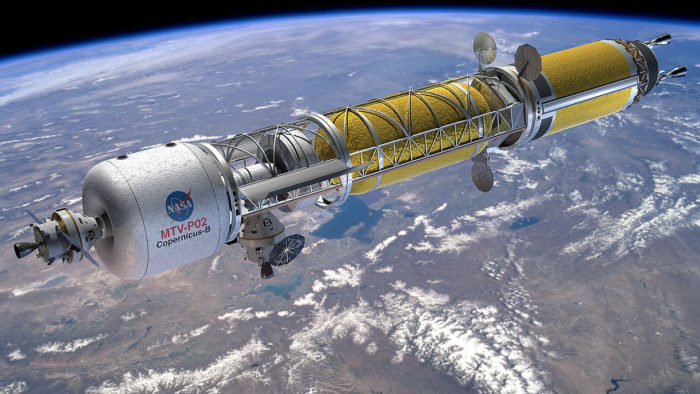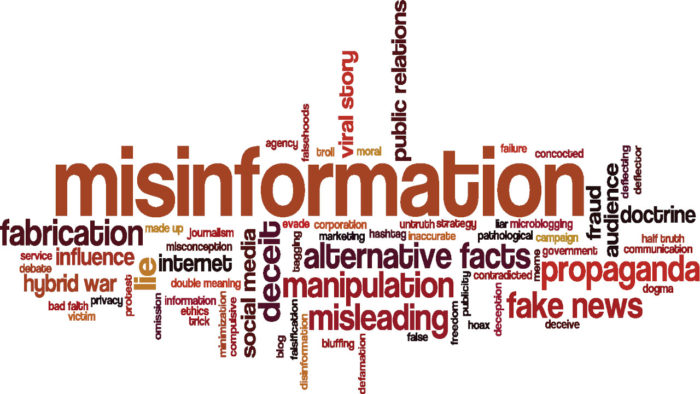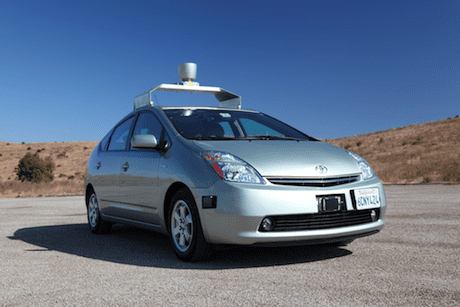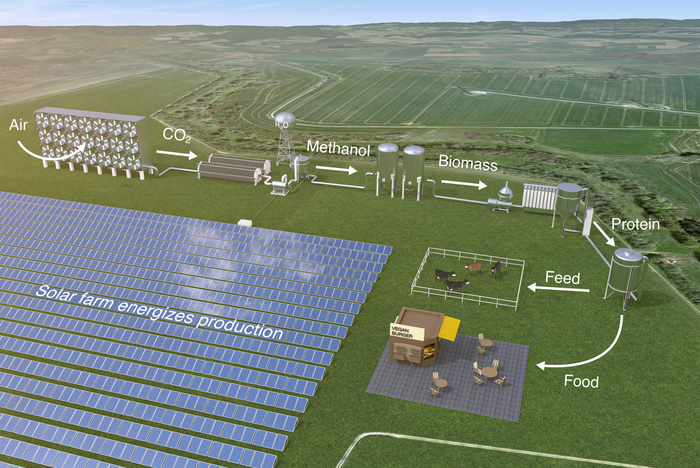Aug
09
2021
 This past weekend we hosted the second all-digital NECSS, which ended with two talks from NASA scientists, Sarah Noble who spoke about going to the Moon and Julie Robinson who spoke about sending people to Mars. The two projects are intimately connected, really part of one overall goal, as the lessons learns on the Moon will be invaluable to going to Mars. And both will benefit from ongoing research and experience aboard the ISS. Their talks reinforced the impression I had that NASA is thinking in terms of a long term overall strategy for expanding human activity into space. About 40 years ago I first read an article by Isaac Asimov in which he argued strongly that establishing a permanent presence on the Moon will be a critical stepping stone for getting to Mars, and it seems NASA agrees.
This past weekend we hosted the second all-digital NECSS, which ended with two talks from NASA scientists, Sarah Noble who spoke about going to the Moon and Julie Robinson who spoke about sending people to Mars. The two projects are intimately connected, really part of one overall goal, as the lessons learns on the Moon will be invaluable to going to Mars. And both will benefit from ongoing research and experience aboard the ISS. Their talks reinforced the impression I had that NASA is thinking in terms of a long term overall strategy for expanding human activity into space. About 40 years ago I first read an article by Isaac Asimov in which he argued strongly that establishing a permanent presence on the Moon will be a critical stepping stone for getting to Mars, and it seems NASA agrees.
There area few technical points I found interesting, and they reinforce the notion that going to Mars is going to be very challenging. Right now NASA hopes to send people to Mars in the 2030s, but after listening to both talks and having the opportunity to ask some questions, my sense is that this is a bit optimistic. Here are the specific issues that struck me:
Radiation
Every time we discuss going to Mars on the SGU the challenge of shielding from radiation comes up, and Julie Robinson not only reinforced this but painted a more pessimistic picture than I already had. Out in space, away from the Earth’s atmosphere and magnetic field, humans would be exposed to dangerous levels of radiation. There are three ways to mitigate this danger. The first and best method is to shield astronauts from the radiation so they are not exposed to it in the first place. The second is to decrease the amount of time that astronauts are in space. The third is to use medical interventions that reduce the biological effects of radiation. When going to Mars, none of these options are currently adequate.
Continue Reading »
Aug
05
2021
 Misinformation is a booming industry, and that is often exactly what it is. Sometimes it may emerge organically, out of sincere error or misunderstanding. But increasingly misinformation is being weaponized to achieve specific goals. That goal might be to protect the interests of a corporation or industry, to promote a candidate or particular policy position, to engage in a broader culture-war, promote an ideology, or just sell a brand or product. Recently it has become more apparent to me that often there is a common strategy to weaponizing misinformation. It’s likely always been there, but is getting more blatant.
Misinformation is a booming industry, and that is often exactly what it is. Sometimes it may emerge organically, out of sincere error or misunderstanding. But increasingly misinformation is being weaponized to achieve specific goals. That goal might be to protect the interests of a corporation or industry, to promote a candidate or particular policy position, to engage in a broader culture-war, promote an ideology, or just sell a brand or product. Recently it has become more apparent to me that often there is a common strategy to weaponizing misinformation. It’s likely always been there, but is getting more blatant.
The “misinformation trifecta” combines three synergistic strategies. The first is spreading the misinformation itself, factual claims that are wrong, misleading, fabricated, cherry-picked, or simply indifferent to the truth. This is the “payload”, if you will. For example, claiming that GMOs are harmful to one’s health is simply wrong. There is no evidence to support this, and in fact there is copious evidence that GMO crops are as safe and healthful and their non-GMO counterparts. This bit of information is used to promote a certain ideology (based on the appeal to nature fallacy) and a competitive brand, organic farming. It is often packaged with lots of other bits of misinformation, all woven together into a certain narrative.
Narratives are powerful because they tend to take on a life of their own. They organize misinformation into a story, and people have an easier time understanding, remembering, and relating to stories rather than isolated facts. Narratives also provide a lens through which we view reality. Once you have sold someone on a narrative, they then curate their own misinformation to further support the narrative.
If misinformation itself were the only issue, then the solution would be straightforward. This is the “knowledge deficit” model, where misinformation is corrected with better, more accurate or complete information. Past efforts at public education and countering misinformation have focused on this knowledge deficit approach. This has a limited (but non-zero) effect. It is highly variable depending on the particular topic, but mostly it is inadequate to counter misinformation.
Continue Reading »
Aug
03
2021
A lot of people have noticed that the self-driving car revolution has been…delayed. For the last decade predictions of when the technology would be ready for mass adoption were converging on the 2020s, beginning early in the decade. In this 2010 article, the prediction was – at least 8 years. Also, “US Secretary of Transportation Anthony Foxx declared in 2016 that we’d have fully autonomous cars everywhere by 2021.” Since then the technology has advanced tremendously, but has not quite crossed the threshold of fully autonomous vehicles. We are stuck in the “driver-assist” stage. Right now you can get a Tesla with the driver-assist package which you can use to summon your car from its parking space, and to assist during driving to help avoid accidents. But the driver must always be attentive and at the wheel. Fully autonomous driving is not yet a reality. What happened?
that the self-driving car revolution has been…delayed. For the last decade predictions of when the technology would be ready for mass adoption were converging on the 2020s, beginning early in the decade. In this 2010 article, the prediction was – at least 8 years. Also, “US Secretary of Transportation Anthony Foxx declared in 2016 that we’d have fully autonomous cars everywhere by 2021.” Since then the technology has advanced tremendously, but has not quite crossed the threshold of fully autonomous vehicles. We are stuck in the “driver-assist” stage. Right now you can get a Tesla with the driver-assist package which you can use to summon your car from its parking space, and to assist during driving to help avoid accidents. But the driver must always be attentive and at the wheel. Fully autonomous driving is not yet a reality. What happened?
In retrospect it all seems completely predictable, because we have been here so many times before. This pattern does not necessarily happen with every technology, but it is extremely common, especially for new and complex technology. We have seen this with fusion reactors, artificial general intelligence, gene therapy, stem-cell therapy, the hydrogen economy, and flying cars. There are some common themes that keep cropping up. One is the tendency to overestimate short term progress, while underestimating long term progress. This pattern, in turn, results from some underlying tendencies and cognitive biases.
I think one of the most important is that we tend to default to extrapolating linearly into the future. So we think – if we have made this much progress between 2000 and 2010, then we should make similar progress between 2010 and 2020, and that’s when we will cross the finish line. The problem is, technological progress is not always linear. There is a more complex relationship, which can make net progress both faster and slower than we predict. This is because technological progress can be geometric, rather than linear. But at the same time, challenges can be geometrically difficult, so there is diminishing returns. These are competing geometric issues, and how they sort out can be difficult to extrapolate.
Continue Reading »
Aug
02
2021
 In 1968 Paul Ehrlich wrote the controversial book, The Population Bomb, in which he argued that we had lost to battle to feed the world and would soon face massive starvation. He also argued that overpopulation was the number one threat to the environment. In a 2018 review, Smithsonian Magazine argues that Ehrlich’s book, in addition to being clearly wrong in its predictions, had a large effect on the environmental movement itself, moving it toward believing that overpopulation was their most urgent issue. This in turn also lead to a host of repressive and abusive policies around the world, especially toward women.
In 1968 Paul Ehrlich wrote the controversial book, The Population Bomb, in which he argued that we had lost to battle to feed the world and would soon face massive starvation. He also argued that overpopulation was the number one threat to the environment. In a 2018 review, Smithsonian Magazine argues that Ehrlich’s book, in addition to being clearly wrong in its predictions, had a large effect on the environmental movement itself, moving it toward believing that overpopulation was their most urgent issue. This in turn also lead to a host of repressive and abusive policies around the world, especially toward women.
Even today, whenever I blog about related issues such as organic farming, it is common for someone in the comments to essentially argue that we need to allow millions or billions of people to starve to death in order to control population, which is the single most important thing. The “overpopulation purists” are following in Ehrlich’s legacy.
Ehrlich, however, was completely wrong in his predictions because he missed the green revolution, the remarkable ability for technology to be leveraged to increase the productivity of an acre of farmland several fold. We are now facing a similar situation, with scientists warning that the world population will likely increase to about 10 billion people by sometime around 2050. Yet, we are already exploiting most of the available arable land, so simply expanding farmland is not a great option. Any further expansion will extend into progressively less productive land, or into forests or occupied land. Further, land use is the greatest impact that farming, and in fact humans, have on the environment. If anything we should be looking for ways to return land to a natural ecosystem, in order to minimize extinctions due to loss of habitat.
Just because I disagree strongly with the overall position of the overpopulation purists, that doesn’t mean they don’t have somewhat of a point. It is probably a good idea to stabilize the human population on the Earth at some point. Fortunately, we know from experience how to do this – when we lift people out of crushing poverty and grant basic rights to women, then populations stabilize (without having to starve anyone). These are things we should be doing anyway, and we have an extra incentive to do so.
Continue Reading »
 This past weekend we hosted the second all-digital NECSS, which ended with two talks from NASA scientists, Sarah Noble who spoke about going to the Moon and Julie Robinson who spoke about sending people to Mars. The two projects are intimately connected, really part of one overall goal, as the lessons learns on the Moon will be invaluable to going to Mars. And both will benefit from ongoing research and experience aboard the ISS. Their talks reinforced the impression I had that NASA is thinking in terms of a long term overall strategy for expanding human activity into space. About 40 years ago I first read an article by Isaac Asimov in which he argued strongly that establishing a permanent presence on the Moon will be a critical stepping stone for getting to Mars, and it seems NASA agrees.
This past weekend we hosted the second all-digital NECSS, which ended with two talks from NASA scientists, Sarah Noble who spoke about going to the Moon and Julie Robinson who spoke about sending people to Mars. The two projects are intimately connected, really part of one overall goal, as the lessons learns on the Moon will be invaluable to going to Mars. And both will benefit from ongoing research and experience aboard the ISS. Their talks reinforced the impression I had that NASA is thinking in terms of a long term overall strategy for expanding human activity into space. About 40 years ago I first read an article by Isaac Asimov in which he argued strongly that establishing a permanent presence on the Moon will be a critical stepping stone for getting to Mars, and it seems NASA agrees.
 Misinformation is a booming industry, and that is often exactly what it is. Sometimes it may emerge organically, out of sincere error or misunderstanding. But increasingly misinformation is being weaponized to achieve specific goals. That goal might be to protect the interests of a corporation or industry, to promote a candidate or particular policy position, to engage in a broader culture-war, promote an ideology, or just sell a brand or product. Recently it has become more apparent to me that often there is a common strategy to weaponizing misinformation. It’s likely always been there, but is getting more blatant.
Misinformation is a booming industry, and that is often exactly what it is. Sometimes it may emerge organically, out of sincere error or misunderstanding. But increasingly misinformation is being weaponized to achieve specific goals. That goal might be to protect the interests of a corporation or industry, to promote a candidate or particular policy position, to engage in a broader culture-war, promote an ideology, or just sell a brand or product. Recently it has become more apparent to me that often there is a common strategy to weaponizing misinformation. It’s likely always been there, but is getting more blatant.
 In 1968 Paul Ehrlich wrote the controversial book, The Population Bomb, in which he argued that we had lost to battle to feed the world and would soon face massive starvation. He also argued that overpopulation was the number one threat to the environment.
In 1968 Paul Ehrlich wrote the controversial book, The Population Bomb, in which he argued that we had lost to battle to feed the world and would soon face massive starvation. He also argued that overpopulation was the number one threat to the environment. 




